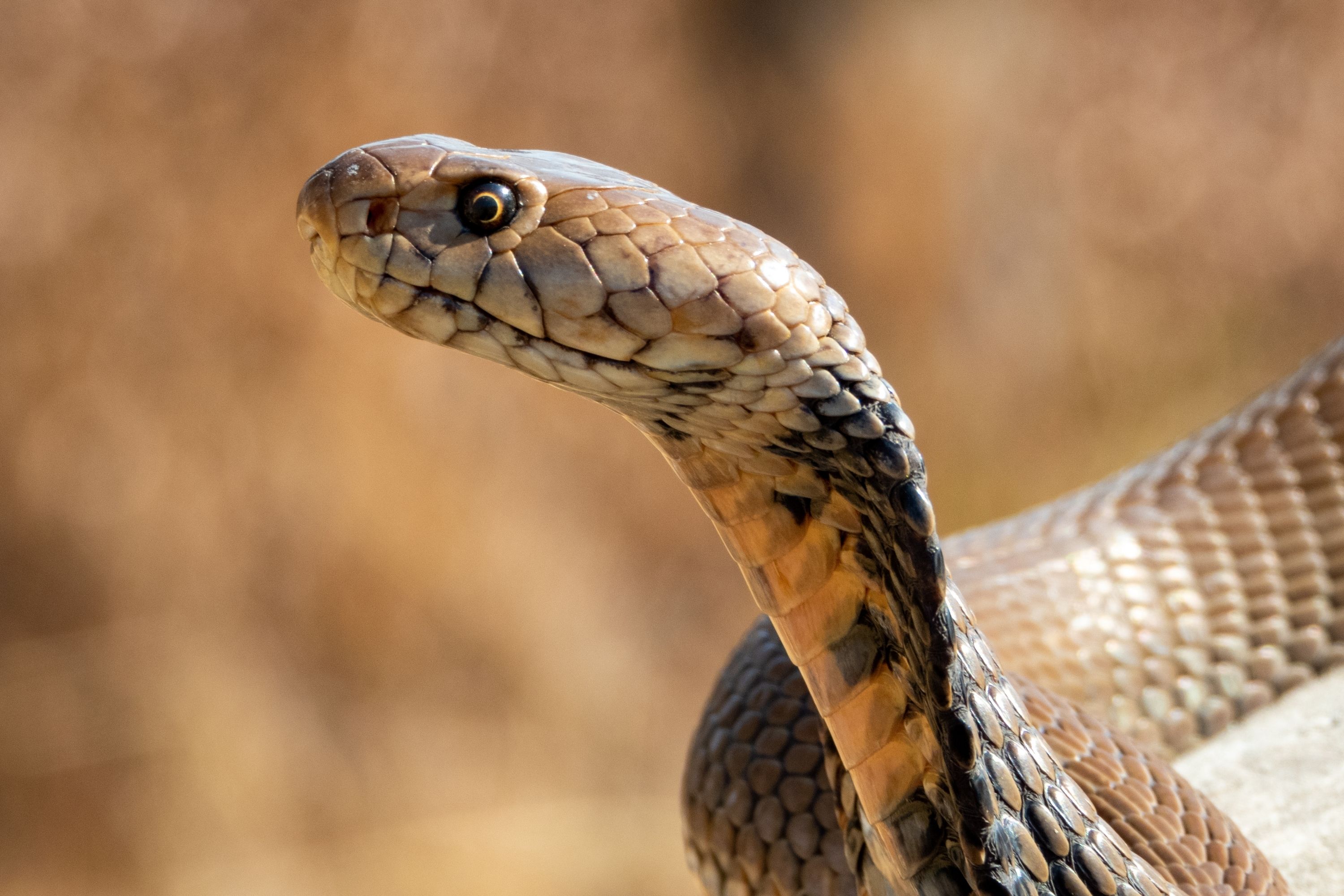Mozambique spitting cobra
(Naja mossambica)

Description
The Mozambique spitting cobra (Naja mossambica) is a highly venomous species of spitting cobra native to Africa. It is largely found in Angola, Botswana, Malawi, Mozambique, Namibia, South Africa, Tanzania, Zambia and Zimbabwe. German naturalist Wilhelm Peters described this species in 1854. In color the snake is slate to blue, olive or tawny black above, with some or all scales black-edging. Below, salmon pink to purple yellowish, with black bars across the neck and ventrals speckled or edged with brown or black; young specimens sometimes have pink or yellow bars on the throat. The average length of adults is between 90 cm - 105 cm (3-3½ feet), but the largest specimen actually measured was a male 154 cm (5 feet) long. (Durban, KwaZulu-Natal, South Africa). This species is the most common cobra of the savanna regions of the tropical and subtropical Africa. The distribution includes all Mozambique, KwaZulu-Natal, as far south as Durban, Mpumalanga Province Lowveld region, south-eastern Tanzania and Pemba Island and west to far southeastern Angola and northeastern Namibia. Younger specimens are much more frequently encountered in the open at daytime. Unlike the Egyptian Cobra, this species prefers localities near water, to which it will readily take when disturbed. It is considered one of the most dangerous snakes in Africa. Its venom is about as toxic as the American Mojave rattlesnake, considered the world's most venomous rattlesnake. Like the rinkhals, it can spit its venom. Its bite causes severe local tissue destruction (similar to that of the puff adder). Venom to the eyes can also cause impaired vision or blindness. The venom of this species contains postsynaptic neurotoxin and cytotoxin. There have been only a few fatalities resulting from bites of this species but survivors are mostly disfigured. A polyvalent antivenom is currently being developed by the Universidad de Costa Rica's Instituto Clodomiro Picado. This cobra's diet mainly consists of amphibians, other snakes, birds, eggs, small mammals, and occasionally even insects. This cobra has been reported to scavenge and eat carcasses in an advanced stage of decomposition. It has been documented feeding on venomous snakes like black mamba and has developed immunity to its venom.
Taxonomic tree:







